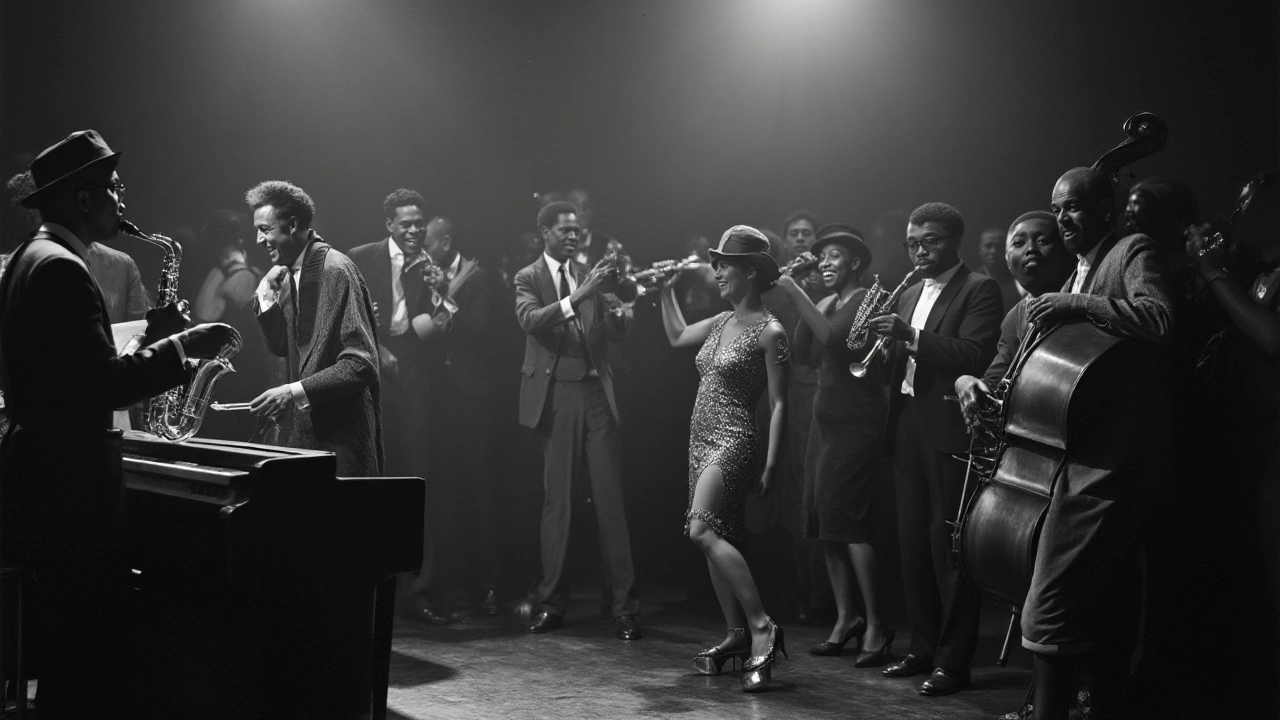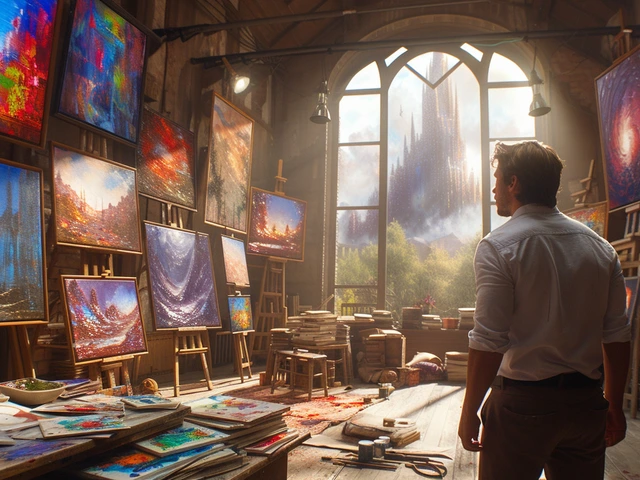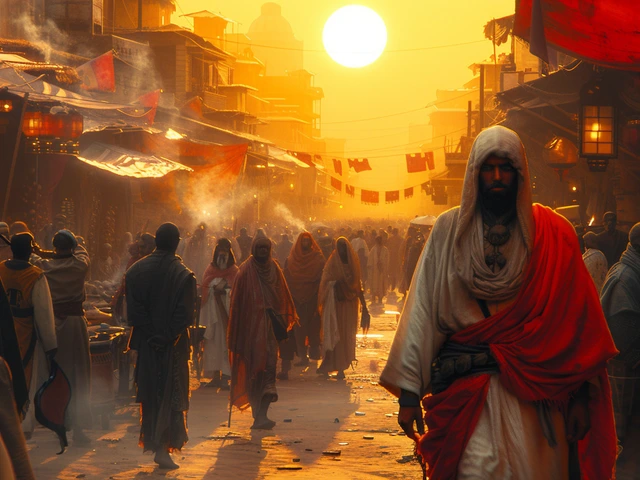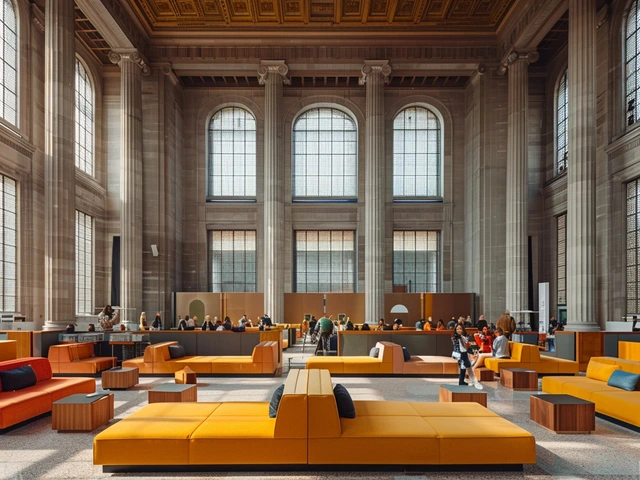The Harlem Renaissance, a blossoming of African American culture, was a powerful period in the early 20th century. Born in the vibrant neighborhood of Harlem, New York, this movement reached its peak during the 1920s and 1930s. It was a time when Black artists, writers, and musicians broke free from societal constraints, shaping a new cultural landscape that celebrated their heritage and creativity.
This era produced a remarkable outpouring of talent and innovation. Not confined to any single medium, the Harlem Renaissance encompassed a variety of art forms, from jazz and blues to poetry and visual arts. It was more than just an artistic movement; it represented a deep sense of pride and a quest for equality and recognition.
- Origins and Historical Context
- Key Figures and Influences
- Art and Literature
- Music and Performance
- Legacy and Modern Impact
Origins and Historical Context
The Harlem Renaissance did not emerge in a vacuum; it was the result of several societal changes and historical events that shaped its foundation. The end of World War I in 1918 brought about significant shifts in American society, with many African American veterans returning home with a new sense of pride and confidence. They had fought for freedom abroad and were now determined to claim their own freedom and rights at home.
During the early 20th century, the Great Migration saw millions of African Americans move from the rural South to the urban North. Driven by the search for better employment opportunities and the desire to escape the oppressive Jim Crow laws, many Black individuals and families settled in Harlem, a neighborhood in New York City. Harlem quickly transformed into a thriving cultural hub.
"Harlem was like a great magnet for the Negro intellectual, pulling him from everywhere." — Arna Bontemps, celebrated Harlem Renaissance poet.
Economic factors also played a crucial role. The post-war economy boom led to an increase in jobs and disposable income, which allowed people to spend more on entertainment and art. Harlem became synonymous with artistic freedom and expression, attracting talents from all walks of life who were eager to showcase their work. Nightclubs, theaters, and art galleries thrived, serving as venues for Black artists and entertainers to perform and display their creations.
Educational advancements further fueled the Renaissance. Institutions like Howard University and Fisk University produced a new generation of educated African Americans who were keen to challenge traditional norms and narratives. Publications such as “The Crisis” by the NAACP and “Opportunity” by the National Urban League provided platforms for Black writers, poets, and scholars to share their ideas and insights.
Another critical influence was the burgeoning sense of racial pride and identity. Leaders of the movement, such as W.E.B. Du Bois, promoted the concept of the “New Negro,” who was educated, sophisticated, and unapologetically proud of their heritage. This ideology fostered a sense of unity and empowerment within the community, encouraging artists to push boundaries and redefine what it meant to be Black in America.
The role of patrons cannot be overlooked. Philanthropists such as Carl Van Vechten and A’Lelia Walker provided financial support and encouragement to artists, ensuring their work reached a broader audience. Their salons became melting pots of ideas, culture, and creativity, further propelling the movement.
In essence, the Harlem Renaissance was born out of a confluence of social, economic, and political forces, buoyed by a collective desire for expression and liberation. It laid the groundwork for future civil rights movements and has left an indelible mark on American culture. The period not only celebrated Black artistic achievements but also challenged the pervasive racial stereotypes and provided a platform for African Americans to forge a new identity.
Key Figures and Influences
During the Harlem Renaissance, several influential figures emerged, reshaping American culture and giving voice to the Black experience. Among them was Langston Hughes, a poet known for his insightful portrayals of Black life in America. His works, such as "The Negro Speaks of Rivers" and "Harlem (Dream Deferred)", captured the struggles and dreams of his people with poignant clarity. Hughes' powerful words continue to resonate, offering timeless reflections on identity and resilience.
Zora Neale Hurston was another prominent figure in the Harlem Renaissance. As an anthropologist and author, she brought the folklore and traditions of Southern Black communities to the forefront. Her novel, "Their Eyes Were Watching God", remains a cornerstone of African American literature. Hurston's ability to weave cultural heritage into her storytelling created a richer, more nuanced portrayal of Black life, challenging the stereotypes and prejudices of her time.
The visual arts also flourished during this era. Aaron Douglas, often referred to as the "father of Black American art", played a pivotal role in shaping the aesthetic of the Harlem Renaissance. His murals and illustrations combined African motifs with modernist techniques, creating a unique visual language that celebrated Black history and culture. Douglas' work not only inspired his contemporaries but also set the stage for future generations of Black artists.
In the realm of music, Duke Ellington and Louis Armstrong stood out as transformative figures. Ellington, a jazz composer and bandleader, brought the sophisticated sounds of big band jazz to life. His performances at the Cotton Club became legendary, showcasing the immense talent and creativity of Black musicians. Armstrong, with his innovative trumpet playing and charismatic stage presence, revolutionized jazz, making it a dominant force in American music.
This period also saw the rise of intellectuals and activists who sought to redefine the narrative around Black identity. W.E.B. Du Bois, a sociologist and civil rights activist, co-founded the NAACP and was a leading advocate for the rights of African Americans. His collection of essays, "The Souls of Black Folk", provided a profound analysis of the Black experience and the ongoing struggle for equality. Du Bois' work laid the intellectual foundation for the civil rights movements that would follow in the decades to come.
"We younger Negro artists who create now intend to express our individual dark-skinned selves without fear or shame. If white people are pleased we are glad. If they are not it doesn't matter. We know we are beautiful. And ugly too." — Langston Hughes, "The Negro Artist and the Racial Mountain"
These key figures, along with many others, contributed to a powerful and enduring legacy. The Harlem Renaissance was not just a fleeting moment in history; it was a profound awakening that continues to inspire and influence artists, writers, and thinkers today. By embracing their cultural roots and expressing their unique perspectives, these pioneers of the Harlem Renaissance paved the way for future generations to explore new dimensions of Black identity and creativity.
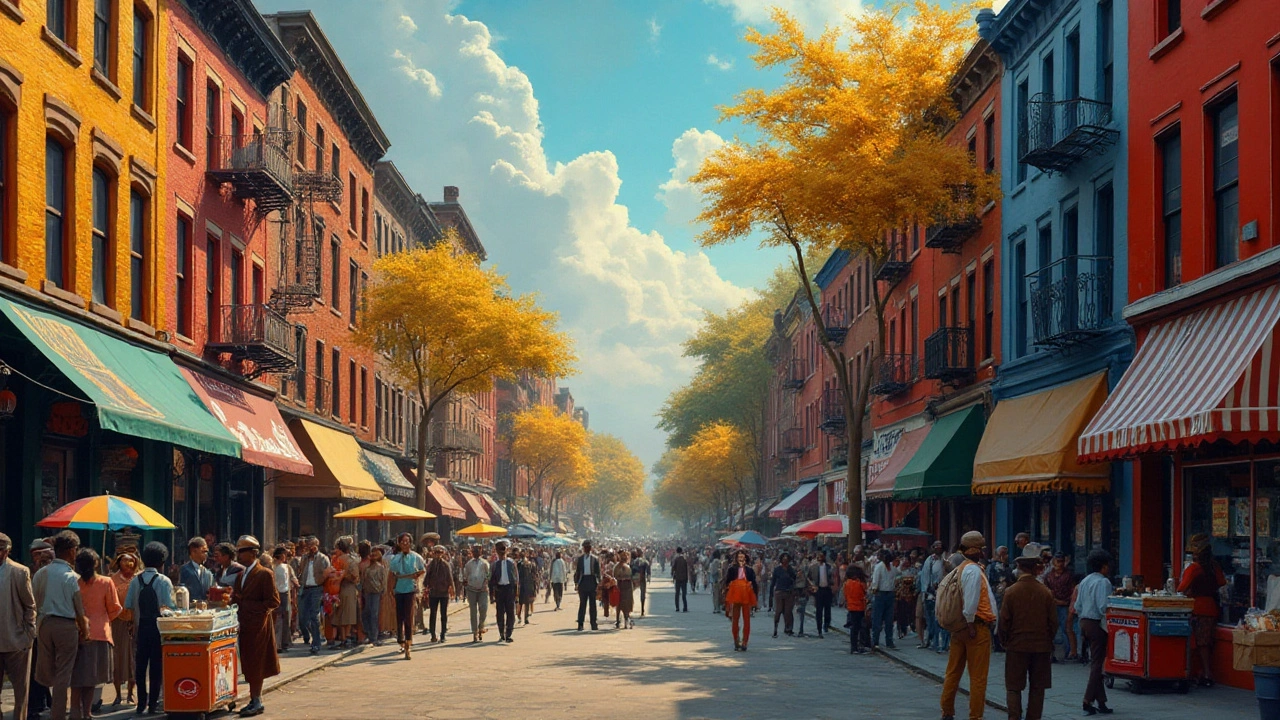
Art and Literature
The Harlem Renaissance is often remembered for its substantial contributions to art and literature. This vibrant era marked a pivotal moment when African American artists and writers stepped into the limelight, painting the world with bold strokes of creativity and intellect. Harlem was not just a neighborhood; it became a crucible where traditions fused with modernity, resulting in an explosion of cultural expression.
One of the most notable figures to emerge from this period was Langston Hughes. He is celebrated for his poetry that resonated deeply with themes of Black identity, resilience, and hope. His poems gave voice to a generation yearning for equality and respect. As Hughes himself said, "An artist must be free to choose what he does, certainly, but he must also never be afraid to do what he might choose." This quote encapsulates the daring spirit that defined the Harlem Renaissance.
Visual arts also flourished during this epoch, with artists like Aaron Douglas leading the way. Douglas's paintings, often featuring geometric shapes and silhouettes, epitomized both the struggles and the triumphs of African Americans. His works were not merely decorative; they were powerful commentaries on social issues, blending African heritage with contemporary themes in a way that was both profound and aesthetically captivating.
The literary scene was equally dynamic. Zora Neale Hurston, with her novel "Their Eyes Were Watching God," captured the essence of African American life in the South. She deftly combined folklore with literature, shining a light on the complexities of Black womanhood. Her work remains significant, studied and revered for its rich portrayal of culture and character.
Other influential writers of the time included Claude McKay and Jean Toomer. McKay's novel "Home to Harlem" provided a gritty, realistic look at the life of Black Americans in urban settings. Through vivid narrative and robust characters, McKay tackled issues of racism and identity head-on. Jean Toomer's "Cane" was a literary masterpiece that interwove poetry, prose, and theater, reflecting the fragmented yet interconnected experiences of African Americans across different landscapes.
Art and literature were not only forms of personal expression during the Harlem Renaissance; they were tools of social change. The content produced in this era challenged prevailing stereotypes and provided a counter-narrative to the mainstream portrayal of Black life. This was, perhaps, the most significant contribution of the Harlem Renaissance—offering a more nuanced, authentic, and empowered representation of African American culture.
The Harlem Renaissance continues to inspire and inform. Its legacy is evident in today’s vibrant Black culture and is celebrated in contemporary art forms, from literature and visual arts to music and performance. It is a reminder of the enduring power of creativity in forging identity and advocating for social justice.
Music and Performance
The Harlem Renaissance saw a phenomenal explosion of music and performance that had a lasting impact not only on American culture but also on the world stage. Jazz and blues were the dominant genres, with Harlem considered the epicenter for these transformative sounds. Black musicians created a vibrant and energetic scene that broke through racial barriers and won the hearts of audiences from all backgrounds.
During this period, legendary figures such as Duke Ellington and Louis Armstrong rose to fame. Performances were often held at clubs like the Cotton Club and the Apollo Theater, which became iconic venues of the era. These spaces were more than just entertainment spots; they were cultural hubs where the Black community could express their creativity freely and without restraint.
Duke Ellington's orchestra was one of the most innovative jazz bands of the time. Ellington's unique use of harmonies, rhythms, and instrumental arrangements pushed the boundaries of traditional jazz. His music captured the essence of the Harlem experience and resonated with listeners globally. Many believe that his compositions during this period were some of his best work.
The Cotton Club, despite its segregationist policies, was a notable venue where many Black artists performed. It was there that Cab Calloway popularized the "Hi-De-Ho" style and where dancers like the Nicholas Brothers dazzled audiences with their moves. Such performances turned the Cotton Club into a symbol of excellence in Black entertainment, even though it mirrored the racial disparities of the time by admitting only white patrons.
"The sight of seeing all these people — Black, white — having a good time entertained by some of the world's greatest Black artists was truly revolutionary," recalled legendary jazz singer Ella Fitzgerald about performing in Harlem.Equally influential was Bessie Smith, known as the "Empress of the Blues." Her powerful voice and emotional intensity made her one of the most compelling performers of her era. Smith's songs, often dealing with themes of love, betrayal, and resilience, encapsulated the struggles and triumphs of the Black experience. Her recordings became milestones in blues music and influenced generations of performers who followed.
Another key aspect of this musical revolution was the interaction between different art forms. Poetry readings often accompanied live music, and artists collaborated on projects that bridged various mediums. Langston Hughes, a renowned poet of the Harlem Renaissance, frequently collaborated with musicians to create work that married poignant lyrics with soulful melodies.
By blending innovation with raw emotional expression, the music and performance arts of the Harlem Renaissance created a rich tapestry of Black culture. These forms of artistic expression not only provided entertainment but also served as powerful tools for social change, breaking down racial barriers and giving a voice to a marginalized community. This era's musical legacy continues to inspire and influence artists around the globe today.
In summary, the Harlem Renaissance's focus on music and performance was a defining chapter in African American history. It ignited cultural pride and fostered a sense of belonging and identity. The tunes from this Golden Age of Black music still resonate today, reminding us of the enduring power of artistic freedom and expression.

Legacy and Modern Impact
The impact of the Harlem Renaissance is profound and far-reaching, extending well beyond its peak in the 1920s and 1930s. This cultural eruption planted seeds that sprouted into the Civil Rights Movement and influenced subsequent generations of African American creatives and thinkers. The movement gave African Americans new ways to express themselves, breaking out of the constraints imposed by society.
One of the most lasting legacies of the Harlem Renaissance is its enduring influence on modern music. Jazz and blues evolved, adapting to new audiences and expanding globally. Artists like Louis Armstrong and Duke Ellington became household names, while their innovative styles paved the way for future genres like R&B and hip hop. Today, many musicians and performers still draw inspiration from the works of these early 20th century pioneers.
The literary contributions of the era also left an indelible mark. Writers such as Langston Hughes and Zora Neale Hurston captured the essence of Black life and aspirations through their poetry and prose. Their works are still studied in schools and continue to inspire new generations of writers. The themes they explored – from racial pride and identity to social inequality – remain relevant today, mirroring ongoing societal struggles.
"The Negro today is inevitably moving forward under the control largely of his own objectives." - Alain Locke, a prominent figure of the Harlem Renaissance, highlighted the movement's forward momentum and enduring spirit.
The visual arts scene of the Harlem Renaissance also left its mark. Artists like Aaron Douglas and Jacob Lawrence used their talents to depict the Black experience, blending traditional African aesthetics with modernist styles. Their works are displayed in major galleries and museums across the world, serving as a testament to the lasting impact of this era on the art world. These pieces not only tell stories of the past but also challenge viewers to reflect on the present and future.
More than just an artistic revolution, the Harlem Renaissance was a social and political awakening. The community it created nurtured a sense of identity and unity among African Americans. This new consciousness was a cornerstone for future movements advocating for equality and justice. Figures like W.E.B. Du Bois and Marcus Garvey provided leadership and vision that fueled the Civil Rights Movement, and their legacy can be seen in contemporary social justice initiatives.
Educational institutions have also embraced the Harlem Renaissance. Universities and cultural organizations frequently hold events and lectures to commemorate the period's contributions. This academic interest ensures that the ideals and artistic achievements of the Harlem Renaissance are kept alive, inspiring new discussions and explorations about African American culture.
In summary, the Harlem Renaissance did more than produce a wealth of art and literature; it laid the groundwork for future cultural and social movements. Its legacy is a tapestry of artistic excellence, social progress, and a deeper understanding of Black identity. As we look back on this illuminating period, we see a reflection not only of the past but also of enduring hopes and aspirations for equality and self-expression.

